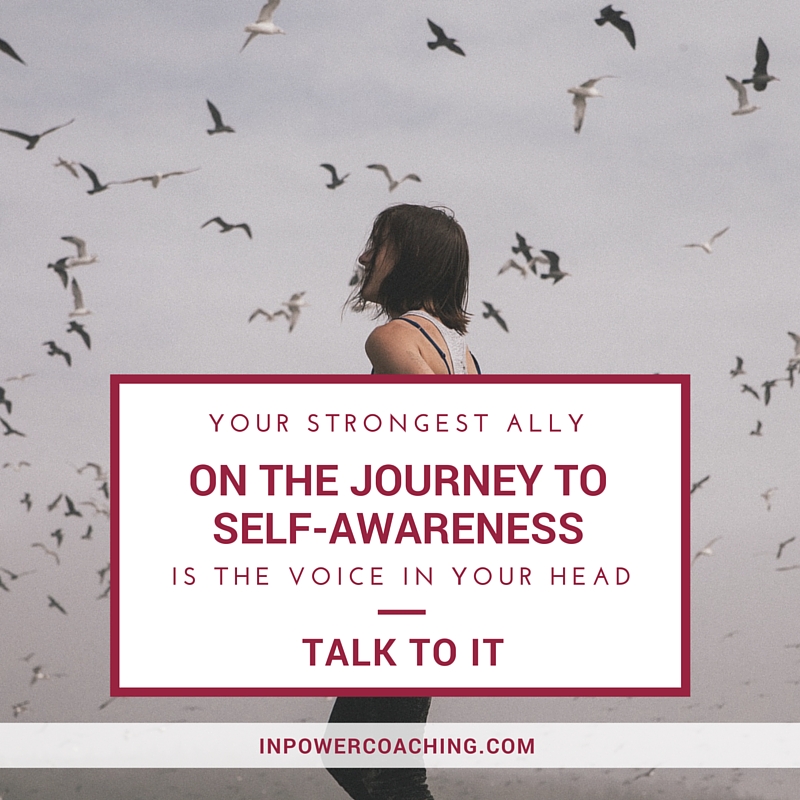 So much leadership communications training is about what we say to others, but the most powerful leaders have open communications with themselves too. Learn from Dana’s insights on a new way to lead – from within! – InPower Editors
So much leadership communications training is about what we say to others, but the most powerful leaders have open communications with themselves too. Learn from Dana’s insights on a new way to lead – from within! – InPower Editors
Great leaders often cite “self-awareness” as the top soft skill responsible for their success. There’s even some research that documents this correlation. I believe that self-awareness is a leadership communication skill, one that starts with communicating effectively with yourself instead of just focusing externally on your relations with others. But how can you develop self-communication prowess and self-awareness if you don’t already have it, and turn it into a professional asset if you do?
I wish I knew a simple answer to this question. I don’t. Self-awareness is a journey, and your strongest ally on this inner journey is the voice in your head — the one you might be used to ignoring, or following without challenging. Learning to communicate effectively with yourself may be one of the greatest communications challenges you’ll ever face.
The truth is that we’re talking to ourselves constantly, and in those inner discussions lie clues to who we are and how we act that can make us extremely powerful actors in the world — or can make us slaves to unconscious patterns that doom us to irrelevance or bullying.
What Are The Voices In Your Head, Anyway?
The voices in your head are your brain’s attempt to help you become more conscious and mindful about how you’re spending your energy, but to actually benefit from their wisdom, you have to engage with them and become a conscious participant. This means that sometimes you must reprogram them to be more helpful. Here’s the simplest process I know to begin to harness their power.
-
- Listen. When your inner voice speaks up, stop and listen. Don’t act! Spend several weeks just noticing what your voice is saying. If you’ve never listened before, pretend you’re meeting someone new for the first time. If you think you’ve listened before, pretend you haven’t. Take no action based on what you hear while you’re learning to listen.
- Talk back. After you’ve got the sense of this new person in your head, talk back to them. Challenge everything they say. No need to be belligerent, but probe and press. Ask for clarification. When you’re not sure what to ask, just ask, “Why?” Your inner voice is an ally who helps by probing you, not telling you want to do. So probe and see what happens. Take action based on this dialog — selectively, when it seems prudent. Remember, you’re in charge.
- Keep talking. Once you get a dialog going, keep at it, and you’ll be learning and becoming aware of yourself through a new lens. Keep challenging your inner voice, and when you act based on its advice, notice what happens. Report back to your inner voice as though it were a partner and strategize how to handle things the next time. Hold your inner partner accountable and don’t be afraid to tell it to go to hell sometimes. (It will certainly tell you the same!)
- Get out of your own head. Getting into an inner dialog is really a way to gain a new, more conscious, perspective on yourself. When you’ve got the hang of this, take a look at yourself through the eyes of others for yet another perspective. Then engage your inner voice to help you interpret what you learn and improve how you’re coming across. Leaders who aren’t self-aware sometimes get stuck in their own heads and have no idea how their behavior affects others. Don’t be that guy.
Self-aware leadership is the skill of developing yourself simultaneously from the inside-out and from the outside-in, and learning to rely on your inner partner as an ally to help you modulate your behavior and become more effective. Self-awareness is the challenge of achieving professional success through personal development, and it’s a journey that will last a lifetime.






